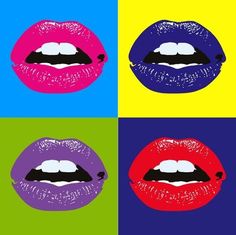A continuación tenéis enlaces relacionados con nuestra materia, son aplicaciones y herramientas útiles "on line ", para trabajar conectados, la mayoría sin tener que descargar ningún programa...
- Practica el dibujo técnico con.../ Practice technical drawing with
SKETCHUP /UP,


- Para crear textura visuales parecidas a llamas / to create flame-like textures :
FLAME

- Herramientas de dibujo / drawing and sketching tools:
SCRIBBLER TOO, (
tutorial ),
Scribbler Too es otra de las herramientas de dibujo que enganchan. Parecen dibujos de la web, fáciles de crear, con múltiples opciones y posibilidades de modificación,. Aprender con herramientas como ésta es tan sencillo que, una vez que lo dominas, crear obras de arte también es sencillo.
Scribbler Too is another greatly engaging sketching tool. Its web-like drawings are easy to create. Many color options are available for you to modify. Learning the tools is quite easy and once you have learned them, creating masterpieces is quite easy too.
FLASH PAINT,

Flash Paint es una web repleta de herramientas de dibujo con muchas posibilidades. Lo que más me gusta es que tiene la posibilidad de crear complejos y sencillos dibujos geométricos, conseguidos a través de la combinación de lineas, rectas y curvas que puedes modificar fácilmente.
Flash Paint is a full web based drawing tool with many drawing features. The feature I liked best was its ability to create complex geometrical drawings with ease. This was achieved through a combination of lines and curves which you can modify easily.
SKETCH PAD
SketchPad es una simple herramienta de dibujo, con fantásticos colores, fondos y pinceles..
SketchPad is a simple sketching tool with wonderful colors of canvas and brushes. The results you get are quite interesting because of the amazing color combinations.
DOINK
Doink es otra web donde conseguir desde lo más fácil a los más complejos dibujos geométricos a través de lineas rectas o curvas. Es además divertido y rápido.
Doink is another site which I thought made it a lot easier to create complex geometrical drawings through straight lines and curves. Apart from that, basic tools on the site make sketching fun and quick.
MY OATS
My Oats es una página web sorprendente para crear dibujos circulares simétricos.
My Oats This is an absolutely amazing website to create symmetrical circular drawings. You will get the hang of the available tools and mouse gestures rather quickly and easily create wonderful drawings.
- Animaciones con / Animations
PIVOT 
Build your own figures or objects and load your own backgrounds.
GO ANIMATEMake animated videos online for your business with GoAnimate. Create animated marketing videos, sales videos, explainer videos, training videos and ...
MAKE WEB VIDEO VISME
VISMEVISME . Creación online de fáciles presentaciones, animaciones, anuncios y banners, infografías, etc..
VISME :Easily Create online Presentations, animations, animated HTML5 banners, infographics and other rich visual content free in your browser.
POWTOON PowToon es una compañía de servicios en la nube que permite crear presentaciones animadas y videos explicativos animados. Srperendentes videos y presentaciones. Diseños gratuitos explicados. hazlo anímado!!
PowToon Amazing videos and presentations created with PowToon! Explainer Videos; Use ... PowToon - The free animated explainer design software. make animated ...
![]()
![]()
![]() SCRATCH
SCRATCH Scratch es un lenguaje de programación en comunidad online donde puedes crear tu propia historia interactiva, juegos y animaciones.
Scratch is a free programming language and online community where you can create your own interactive stories, games, and animations.

![]() STICKMAN
STICKMAN Dibuja un personaje sencillo y observa como toma vida y se convierte en una aventura interactiva.
Draw a custom stickman and watch him come to life in this interactive stickman adventure.
MAKE BELIEFS COMIXMakeBeliefsComix.com es un creador de tiras cómicas de Bill Zimmermann. Crea, imprime, envia y comparte tusa tiras cómicas.
MakeBeliefsComix.com is an educational comic strip creator from author Bill Zimmerman. Create, print, email and post to Facebook your original comic strips ...
COLOR. METHOD.ACWRITE COMICSWrite Comics is a free, simple tool for creating comic strips. Write Comics doesn't require any registration to use. In fact, registration is not even an option. To create a comic on Write Comics just select a background from the menu, choose some characters, and add some speech bubbles. You can continue adding frames until you've completed your story. Write Comics is quite easy to use, but there is one short-coming and that is the only way you can save your work is to save it to your local hard drive.

FINN online comic creator
BE FUNKY
Be Funky es una herramoenta sencilla para convertir fotografias digitales en comics digitales. La imagen que vez se transforma en cómic.
Be Funky a simple tool for turning digital photographs into digital comics. The image you see to the left is a cartoonized image of me based on a photograph I took with my webcam.
Be Funky can be used for simple one frame images or be used to create an entire strip of cartoonized images with inserted text.
 STRIP GENERATOR
STRIP GENERATOR
 Strip Generator
Strip Generator allows anyone, even people who claim they can't draw, to create a good-looking black and white comic strip. To create a comic strip all you need to do is select the number of frames you want then drag characters and objects into those frames. The menus for characters and objects are fairly extensive. Once you've selected a character or object you can adjust the size to fit your scene. Adding text is a simple matter of selecting a speech bubble and typing text. When you're happy with your comic strip you can save it online, print it, or embed it into your blog.
-
































